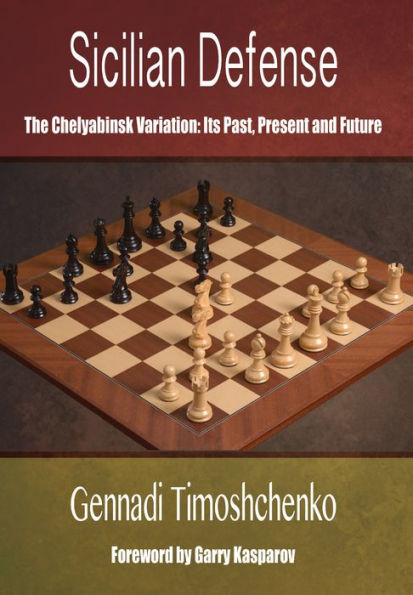Read an Excerpt
Chapter 152 11.c3 Bg5 12.Nc2 Ne7 13.Ncb4 0-0 14.a4 bxa4 15.Qxa4 1.e4 c5 2.Nf3 Nc6 3.d4 cxd4 4.Nxd4 Nf6 5.Nc3 e5 6.Ndb5 d6 7.Bg5 a6 8.Na3 b5 9.Nd5 Be7 10.Bxf6 Bxf6 11.c3 Bg5 12.Nc2 Ne7 13.Ncb4 0-0 14.a4 bxa4 15.Qxa4 [Diagram] Taking with queen is roughly as popular in the database as capturing with the rook, but strong players clearly prefer the queen move. Moreover, its success rate is also notably higher. 15...Nxd5 15...a5 leads to small White edge, for example, 16.Bb5! Nxd5 17.Nxd5 Be6! (17...f5 is slightly weaker in view of 18.b4! fxe4 19.Bc6, and White has an advantage) 18.Bc6 Rb8 19.b4! (the usual 19.Ra2 does not bring any advantage: Black should not play 19...Qc8 (Kamsky-Carlsen, Khanty Mansyisk 2005), but 19...f5! with equal play, for example, 20.h4 Bf6 21.exf5 Bxf5 22.Qc4 Be6!N 23.b4 axb4 24.cxb4 Qc7!, and the queen moves to the comfortable square f7) 19...Bxd5 20.Bxd5 axb4 21.cxb4 Qb6 22.Rb1!N and White has a small advantage. 16.Nxd5 Bd7 After 16...a5 17.Bb5, the game transposes to the 15...a5 variation. (Diagram) This is the critical position for the 15.Qxa4 variation. Where does queen have to withdraw to? Five possible retreats have been tested. This move seems to be the best. All the other retreats are slightly weaker, and their evaluations are practically the same. (a) On 17.Qa5, the simplest reply is 17...Qxa5! 18.Rxa5 Rfb8, for example, 19.b4 Bd8 20.Rxa6 Rxa6 21.Bxa6 Ra8 22.Be2 Ra1 23.Bd1 Bb5 24.h4 Bd3 25.f3 Ra2, etc. (b) In the game Inarkiev-Wang, Nizhni Novgorod 2007, there occurred 17.Qa3 Bc6 18.Bc4 a5 19.b3 Kh8 20.0-0 f5. Here, instead of the strange move 21.Qb2?!, White should have played 21.exf5!N with a very slight advantage. (c) In Anand-Carlsen, Morelia/Linares 2008, White chose 17.Qa2. There followed 17...a5 18.Bd3!? (or 18.Bc4 a4! with equal play) 18...Bc6 (worth attention is 18...a4!? 19.0-0 Qb8) 19.0-0 Qb8 20.Bc4 Kh8 21.b3 f5 22.exf5, and here the game was drawn. However, White retains small advantage after more precise 21.Qb1!N. By the way, this move shows that the queen retreat to а2 was not the most successful decision. (d) In Korneev-Moiseenko, Fuegen 2006, there was 17.Qd1 a5 18.Bc4 Kh8 19.0-0 f5 (19...Rb8!? 20.b3 f5 is more accurate) 20.exf5 Bxf5 21.Qe2 (and here White has the unpleasant 21.Bd3!) 21...Qb8 (21...Be6N seems to be more precise) 22.Rfd1 (after 22.b4!N White has a small edge), and after all those mutual slips, the game lost its theoretical interest. (Diagaram)



